Genus: Ulmus
Family: Ulmaceae
Elms were once very common in the United States, and most larger cities had at least one “Elm Street” lined with rows of tall, stately trees. But Dutch elm disease, which entered this country in 1930, has changed all that. The disease is caused by a fungus which, in turn, is spread by beetles. Trees hit with the disease gradually wilt, turn yellow, and die. Dutch elm disease has been spreading across the country and it reached the west coast in the 1970’s.
Here at Reed, we haven’t lost any of our campus trees to Dutch elm disease, even though some have been killed in Eastmoreland. Most of our Elms are susceptable to Dutch elm disease so we monitor them carefully and get them sprayed one time each spring to prevent the Elm Leaf Beetle from weakening the trees which leads to the Elm Bark Beetle infecting the tree with the disease. Reed has not planted any elms in recent years, so all of our elms are older trees along Woodstock Boulevard.
Map of elm trees on campus
Allee Chinese Elm
Scientific name: Ulmus parvifolia 'Allee'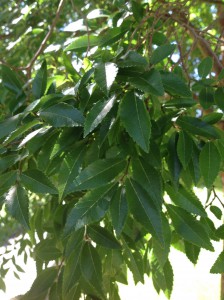
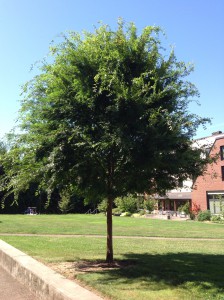 This elm from eastern Asia is known mostly for its long, narrow leaves and its attractive bark. It tolerates urban conditions, is resistant to Dutch elm disease, and can reach 40 to 50 feet in height. The small, red clusters of flowers appear in early autumn.
This elm from eastern Asia is known mostly for its long, narrow leaves and its attractive bark. It tolerates urban conditions, is resistant to Dutch elm disease, and can reach 40 to 50 feet in height. The small, red clusters of flowers appear in early autumn.
View tree page and map.Dutch Elm
Scientific name: Ulmus x hollandica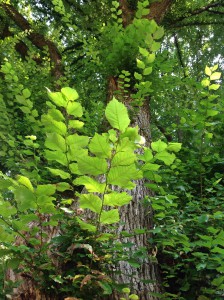
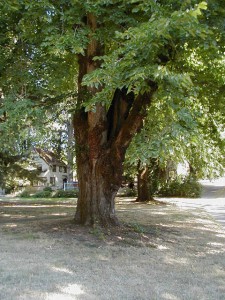 A variable hybrid elm with variable parentage. They tend to have relatively large leaves, most often smooth above, and abundant seeds in the spring. Sometimes a tree is called a Dutch Elm because it doesn't fit well into any of the characteristics of the other elm species.
A variable hybrid elm with variable parentage. They tend to have relatively large leaves, most often smooth above, and abundant seeds in the spring. Sometimes a tree is called a Dutch Elm because it doesn't fit well into any of the characteristics of the other elm species.
View tree page and map.English Elm
Scientific name: Ulmus procera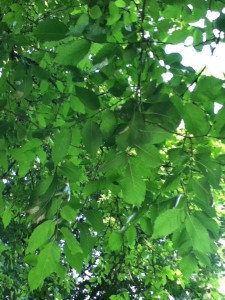
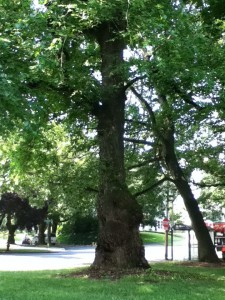 A European Elm, native from England to central and south Europe, this big but lacy-looking tree can reach a height of about 150 feet. The crown is typically dense but irregular and the smaller branches may have corky wings. The leaves of this elm are smaller than those of the American Elm. The species is a popular tree in the northeast United States. It was lumber from this tree that brought the Elm Bark Beetle, carrying Dutch elm disease to the United States in 1930.
A European Elm, native from England to central and south Europe, this big but lacy-looking tree can reach a height of about 150 feet. The crown is typically dense but irregular and the smaller branches may have corky wings. The leaves of this elm are smaller than those of the American Elm. The species is a popular tree in the northeast United States. It was lumber from this tree that brought the Elm Bark Beetle, carrying Dutch elm disease to the United States in 1930.
View tree page and map.Scotch Elm
Scientific name: Ulmus carpinifolia The Scotch Elm is a massive and rather open tree growing from 80 to 100 feet with a spread of nearly the same dimension. The foliage is dark green on top and lighter underneath, and the top is very rough to the touch. The tree is native to north and central Europe and Asia.
The Scotch Elm is a massive and rather open tree growing from 80 to 100 feet with a spread of nearly the same dimension. The foliage is dark green on top and lighter underneath, and the top is very rough to the touch. The tree is native to north and central Europe and Asia.
View tree page and map.Smooth-Leafed Elm
Scientific name: Ulmus carpinifolia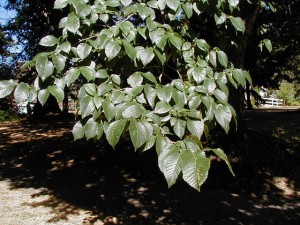
 Native to Europe, North Africa and western Asia, this elm will grow 70 to 90 feet. Its leaves are relatively small and smooth to the touch.
Native to Europe, North Africa and western Asia, this elm will grow 70 to 90 feet. Its leaves are relatively small and smooth to the touch.
View tree page and map.